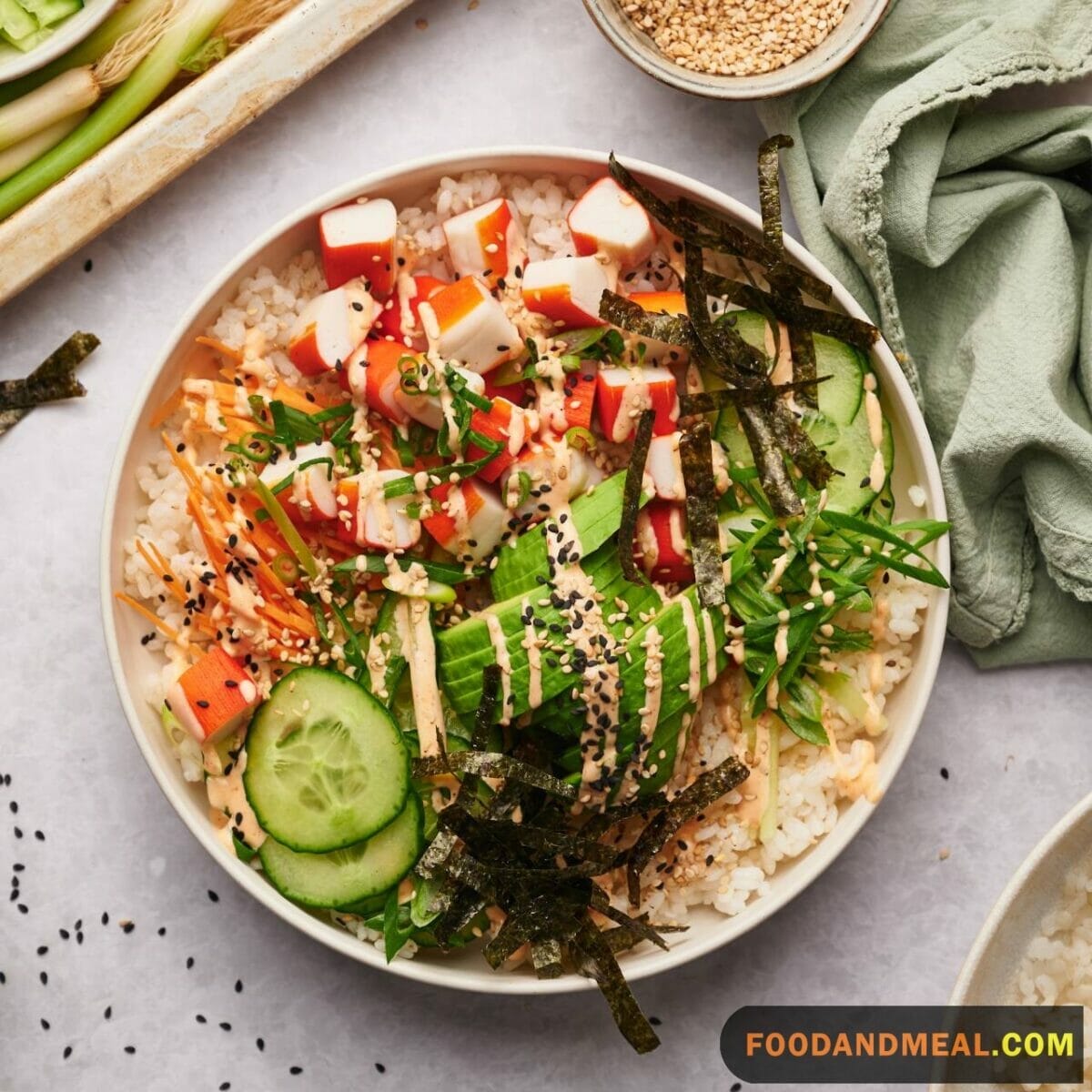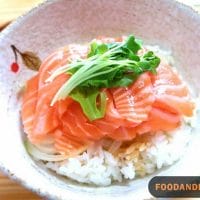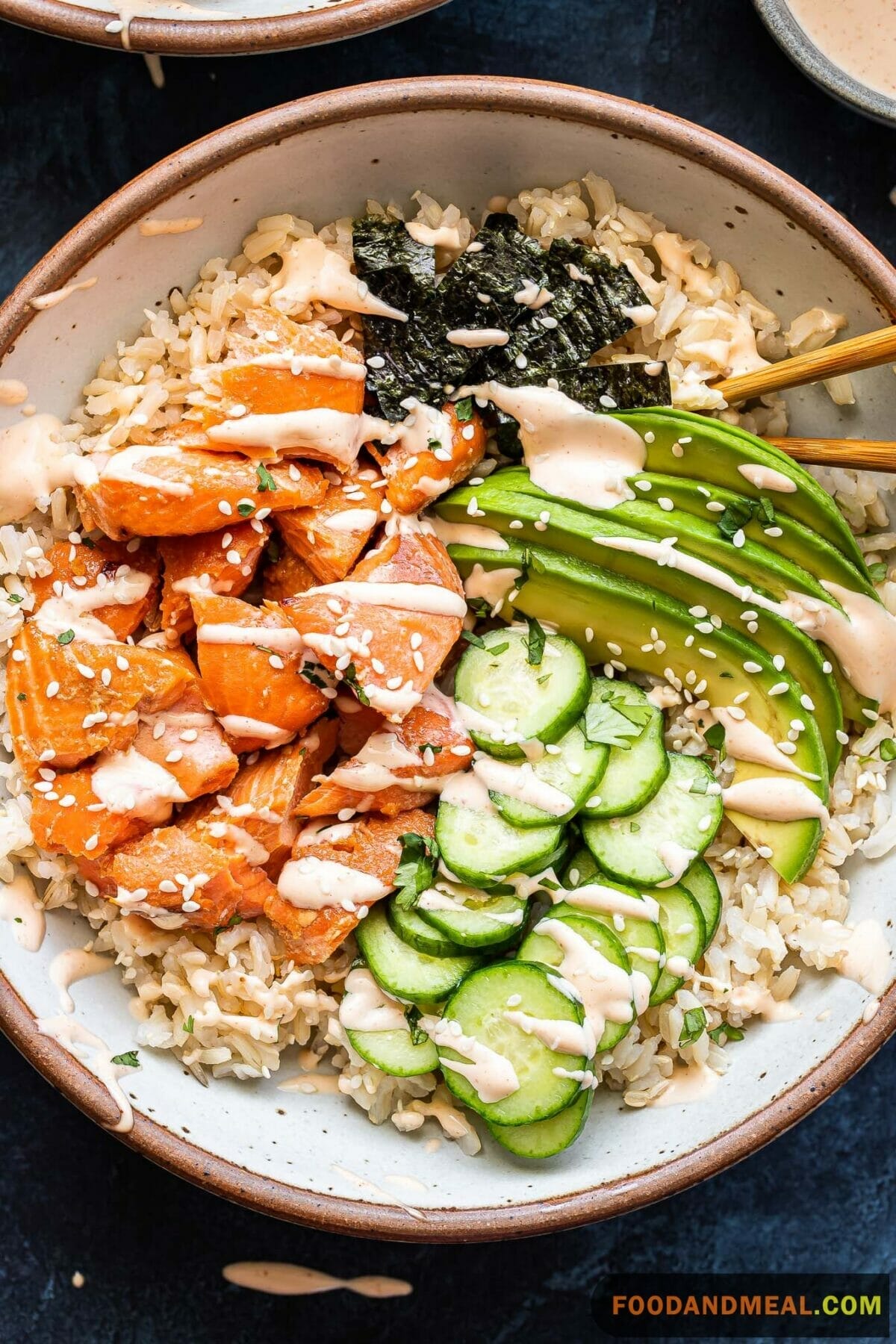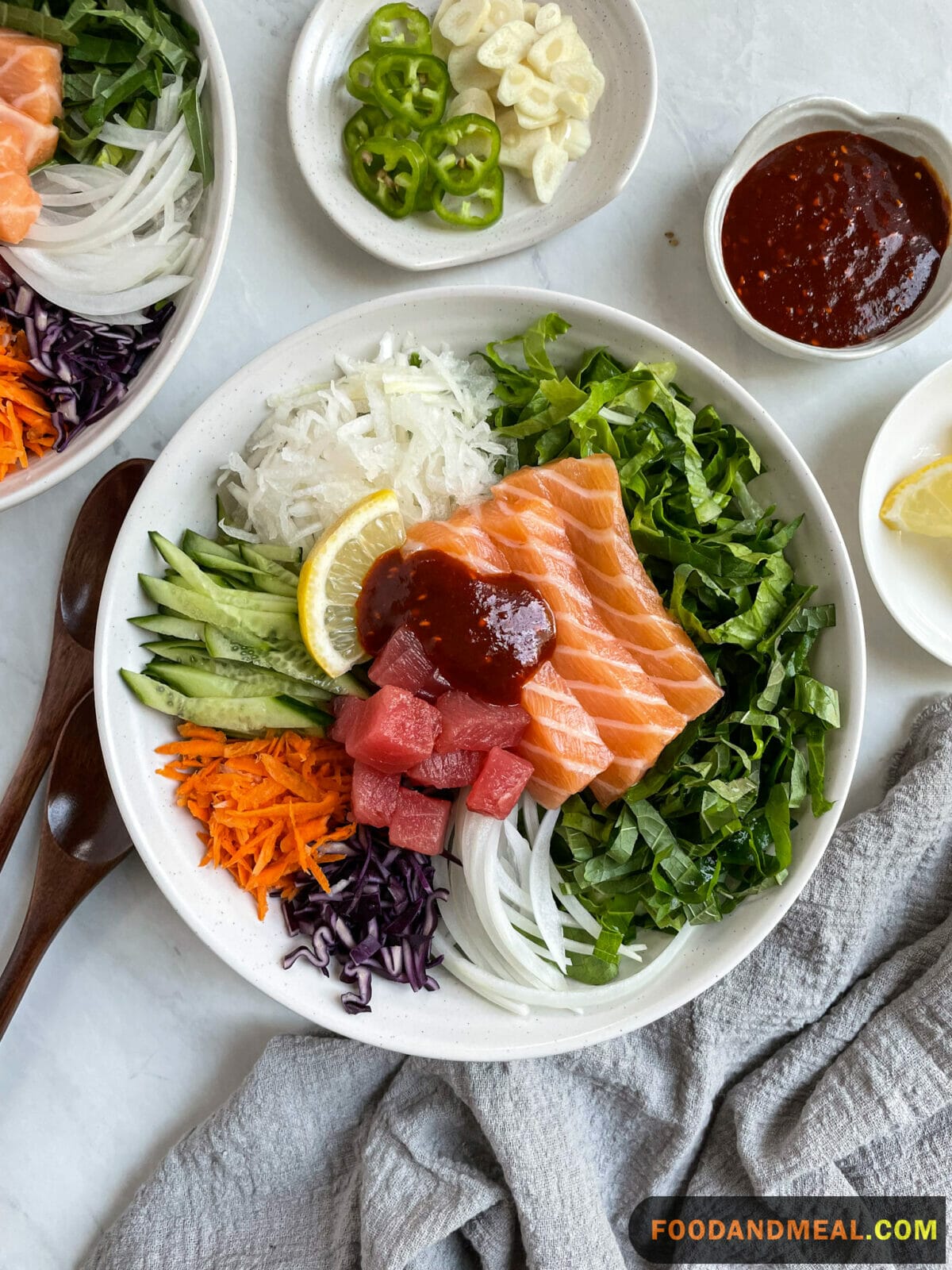As Nazia working at Food And Meal, I wanted to share a recipe for mixed rice with sashimi, a simple yet elegant Korean-inspired rice bowl. When I first tried this dish at a local sushi restaurant, I was immediately captivated by the beautifully arranged slices of raw fish and seafood nestled on a bed of seasoned rice.
Just looking at the vibrant colors – ruby red tuna, buttery yellowtail, and glistening salmon atop white rice – was a feast for the eyes. And the fresh, delicate flavors of the seafood really allowed the rice seasoning to shine through in each bite. There was a wonderful interplay of textures too – the warm, fluffy rice contrasting nicely with the cool, smooth sashimi.
I love how this rice bowl comes together with minimal effort, making it a great weekday meal. Simply cooking some short-grain rice and seasoning it with rice vinegar, sugar, and salt is the perfect base. Piling on your choice of the freshest sashimi from the local fish market makes it feel so special.

Mixed Rice with Fresh Sashimi

Mixed Rice with Sashimi Recipe
Equipment
Ingredients
- 5 cups cooked rice
- 2 pounds sushi-grade fish (red snapper, yellowtail, tuna, striped bass, or salmon), cut in 1⁄2-inch by 1-inch pieces
- 1 head red leaf lettuce, chopped
- 1 small cucumber, thinly sliced
- 1 small carrot, cut in matchsticks
- 7 to 8 perilla leaves, thinly sliced
- 1/2 Asian pear, peeled, cored, and thinly sliced
- 1 large sheet roasted laver seaweed, cut in thin strips
- Sesame seeds, for garnish (optional)
- 1 cup seasoned chile paste (cho gochujang) or gluten-free gochujang, for serving
Instructions
- Divide the rice among 4 bowls.
- Arrange the fish, lettuce, cucumber, carrot, perilla leaves, and Asian pear neatly on top of the rice. Top with the seaweed strips.
- If using sesame seeds, sprinkle them over each bowl.
- Serve with the cho gochujang on the side.
Notes
Nutrition
© Food And Meal
This website provides approximate nutrition information for convenience and as a courtesy only. Nutrition data is gathered primarily from the Spoonacular Database, whenever available, or otherwise other online calculators.
Cooking Tips

First, start with high-quality sashimi grade fish from a trusted fishmonger. Hand-select cuts of salmon, tuna, yellowtail, and more based on what looks freshest each day. I love admiring the vibrant hues glistening on the ice at the seafood counter, excited to transform them into a colorful centerpiece topping the rice.
When seasoning the rice, don’t be afraid to adjust amounts of rice vinegar, sugar, and salt to suit your taste. I add a touch more sweetness and acidity to balance the rich fattiness of the fish. Mix in some black or white sesame seeds too for a deliciously nutty crunch.
Artfully arranging the sashimi is my favorite finishing touch. I meticulously drape thin slices of fish like jewel toned ribbons over the seasoned rice, taking time to appreciate how each unique variety shines through. Finally, splashing on some bright green wasabi and pickled ginger lends the perfect punchy accents.
Serving Suggestions

Korean mixed rice with sashimi is a simple yet elegant meal that pairs nicely with many side dishes. I’d suggest starting with some crisp and tangy kimchi stew or spicy octopus to cut through the rich fattiness of the raw fish.
A light seaweed soup would also make a nice complement, letting the clean flavors of the rice and sashimi shine. For some texture, baked miso salmon or shrimp tempura are crispy, hot options that contrast with the cool sashimi slices.
Don’t forget a punch of fresh ginger and wasabi to wake up your taste buds! For dessert, creamy butter mochi is a sweet way to end this Japanese-Korean fusion meal on a decadent note. With an array of complementary flavors and temperatures, you can create a balanced dining experience perfect for savoring mixed rice with sashimi.
FAQs of Mixed Rice with Sashimi

- What is rice with sashimi called? Rice with sashimi is commonly referred to as “Chirashi” or “Chirashi Sushi.”
- Can sashimi be on rice? Yes, sashimi can be served on rice, creating a dish known as Chirashi Sushi. The combination of fresh raw fish and rice is a popular and delicious choice.
- What does chirashi mean? “Chirashi” translates to “scattered” in Japanese, referring to the scattered arrangement of sashimi, vegetables, and other toppings over a bed of rice.
- What is the difference between chirashi and poke?While both Chirashi and Poke involve raw fish, they differ in their presentation. Chirashi is a Japanese dish with sashimi and other ingredients arranged on top of rice, while Poke is a Hawaiian dish where cubed raw fish is served with various seasonings, often over rice or salad.
- What type of rice works best for this dish? Short-grain rice, commonly used in Korean cooking, is ideal. Its sticky consistency binds well with the other ingredients, offering the classic texture.
- How can I ensure my fish is safe for consumption? Always purchase sashimi-grade fish from reputable sources. This grade is specifically intended to be consumed raw and is processed to maintain freshness and minimize parasites.
- Can I add vegetables to the mix? Absolutely! Thin slices of cucumber, carrot strips, or even avocado can introduce additional textures and flavors.
- Is there a vegetarian alternative? Yes, you can replace sashimi with tofu or tempeh. While it won’t replicate the taste of fish, it will still be a delightful variation of the dish.
- How should I store leftovers? Leftovers should be refrigerated in an airtight container and consumed within a day. Given the raw nature of sashimi, it’s crucial to prioritize freshness.
Conclusion
In conclusion, mixed rice with sashimi is the ultimate simple weeknight meal that makes me feel like I’m dining at a high-end sushi restaurant. By seasoning plain rice with vinegar, sugar, and salt then topping it with the freshest raw seafood, you can create a minimalist masterpiece bursting with texture and flavor contrasts. Experiment with different varieties of fish and creative garnishes to keep this rice bowl exciting.
I hope the tips I shared from my journey of enjoying mixed rice with sashimi at home have inspired you to give this elegant dish a try. Let me know if you have any other favorite sashimi rice combinations I should try next! And be sure to check FoodAndMeal.com for even more Japanese and Korean-inspired recipes perfect for any night of the week.
Hi! I'm Nazia of ‘Nazia Cooks’, a self-taught baker and cook residing in Chennai. Rooted in the rich South Indian culinary landscape, my palate has expanded to embrace global flavors. I revel in crafting fusion dishes, melding traditions to birth unique tastes.

